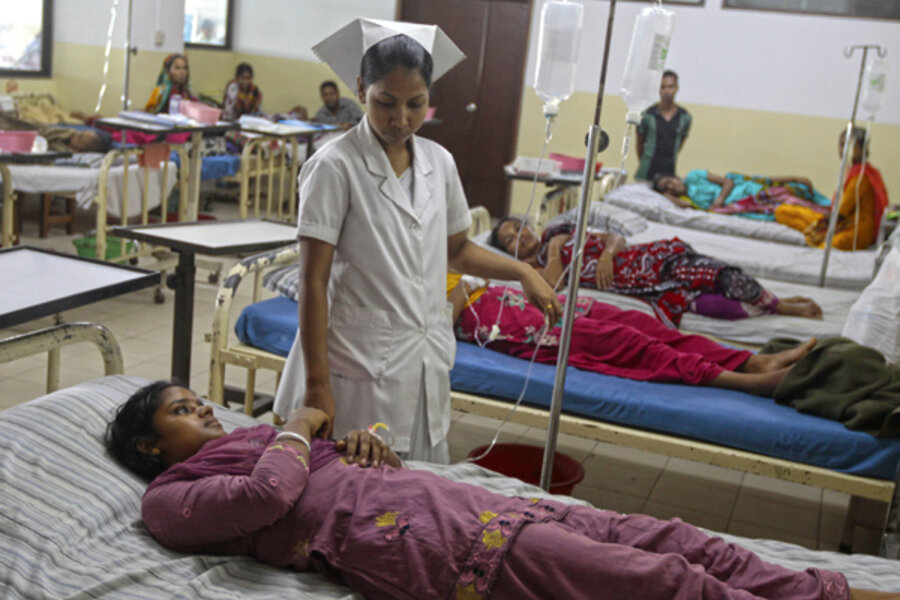Mass hysteria outbreaks hit Bangladesh's garment workers
Loading...
| Dhaka, Bangladesh
Hundreds of garment workers fell ill on Sunday after drinking water of questionable quality at their workplace in Gazipur at the outskirts of Bangladesh's capital, Dhaka.
The incident occurred less than two weeks after about 800 workers fell ill and were hospitalized after drinking water at Starlight Sweaters Ltd., which produced clothes for European buyers Carrefour and Otto.
The Institute of Epidemiology, Disease Control and Research in Bangladesh, which tested samples of the water after the incident at Starlight Sweaters on June 5, said they did not find anything unusual from the regular contaminants in water. The Institute’s director, Dr. Mahmudur Rahman, found the case to be a result of “mass psychogenic illness.”
The director believed the illness was a result of a panic attack that may have been triggered by factory authorities announcing that something was wrong with the water and closing work for the day.
Bangladesh’s garment industry, which constitutes 80 percent of the country’s export revenue worth $20 billion, has been troubled with shutdowns and agitations since the collapse of a factory building in the South Asian country killed 1,129 workers in April. Rumors and incidents of illness have added further panic in the industry, with workers becoming extremely sensitive to workplace accidents.
“There is fear persisting among garment workers since the incident" in April, says Mushrefa Mishu, president of the Garment Workers’ Unity Forum.
Dr. Rahman says the recent illness of garment workers is a result of the prevalent fear. “Such illness is symptomatic mostly among teenage women,” says Rahman. Women make up 80 percent of Bangladesh’s garment industry workforce of 4 million.
Ms. Mishu, however, says that most of Bangladesh’s garment factories do not maintain minimum health safety and hygiene. “The water used in the factories is not purified,” says the labor leader. Most of these workers take water from jars that are filled with pipe waters without purification.
The director of the Institute of Epidemiology does not dispute the poor water quality. Although the illness reported at Starlight Sweaters on June 5 was not a result of water contamination, says Rahman, “the water cannot be considered for drinking."
Responding to Sunday's incident, Rumana Rashid, managing director of Alvin Fashion Ltd., said only two of their workers are currently receiving treatment at hospital out of about 60, who shortly recovered after they were brought to the hospital. “When we visited the hospital, there were workers from two other factories,” she says.
Incidence of “mass psychogenic illness” has been recurrent in Bangladesh, particularly during summer. “This is a complicated issue, which has been recurrent in Bangladesh, particularly in schools. Most recently it is being observed in garment factories,” says Rahman, who identified empty stomachs and dehydration during summer as a contributing factor to such outbreaks in the past.
“Usually such illness is cured through counseling and the patients recover very soon. There is no fatality,” he says.
The recurrence of the problem has prompted the Bangladeshi government to prepare a health program to contain such illness.
The problem has been seen in other stressed parts of the region as well. On June 3, as many as 97 schoolgirls in northern Afghanistan were reported sick after smelling gas, only two months after a similar incident was reported in Takhar province in northeastern Afghanistan. The World Health Organization maintains the reported poisoning of hundreds of Afghan schoolgirls in recent years were in fact cases of “mass psychogenic illness.”
A recent WHO report states: “In the last four years over 1,634 cases from 22 schools have been treated for mass psychogenic illness in Afghanistan. There are no related deaths reported.”








